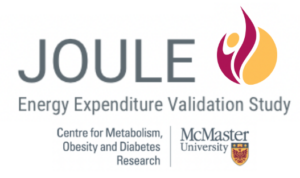Recent Publications
Information Box Group
GDF15 promotes weight loss by enhancing energy expenditure in muscle Nature - June 2023
Caloric restriction that promotes weight loss is an effective strategy for treating non-alcoholic fatty liver disease and improving insulin sensitivity in people with type 2 diabetes1. Despite its effectiveness, in most individuals, weight loss is usually not maintained partly due to physiological adaptations that suppress energy expenditure, a process known as adaptive thermogenesis, the mechanistic underpinnings of which are unclear2,3. Treatment of rodents fed a high-fat diet with recombinant growth differentiating factor 15 (GDF15) reduces obesity and improves glycaemic control through glial-cell-derived neurotrophic factor family receptor ?-like (GFRAL)-dependent suppression of food intake4,5,6,7. Here we find that, in addition to suppressing appetite, GDF15 counteracts compensatory reductions in energy expenditure, eliciting greater weight loss and reductions in non-alcoholic fatty liver disease (NAFLD) compared to caloric restriction alone. This effect of GDF15 to maintain energy expenditure during calorie restriction requires a GFRAL–?-adrenergic-dependent signalling axis that increases fatty acid oxidation and calcium futile cycling in the skeletal muscle of mice. These data indicate that therapeutic targeting of the GDF15–GFRAL pathway may be useful for maintaining energy expenditure in skeletal muscle during caloric restriction.
Attrition from paediatric weight management impacts anthropometric outcomes at 2 years, but not health-related quality of life Clinical Obesity - June 2023
The study objective is to evaluate the influence of attrition from a paediatric weight management program (PWM) on health indicators over a 2-year period. Among 269 children enrolled, 19% had no clinic treatment visit, 16% had treatment visits only up to 6?months, 23% up to 1?year and 42% had at least one clinic visit after 1?year (No Attrition). Greater declines in BMI z-score and body fat were seen at 2?years in children with No Attrition, while improvements in HRQoL were similar for all attrition groups. Children who attended at least one treatment visit reported improved HRQoL up to 2?years, regardless of duration in clinic. In contrast, declines in body fat and BMI z-score were greater at 2?years for those with at least one visit after 1?year. Continued efforts to reduce attrition are likely to improve anthropometric health outcomes during PWM.
A single dose of exercise stimulates skeletal muscle mitochondrial plasticity in myotonic dystrophy type 1 ACTA Physiologica - April 2023
Myotonic dystrophy type 1 (DM1) is the second most common muscular dystrophy after Duchenne and is the most prevalent muscular dystrophy in adults. DM1 patients that participate in aerobic exercise training experience several physiological benefits concomitant with improved muscle mitochondrial function without alterations in typical DM1-specific disease mechanisms, which suggests that correcting organelle health is key to ameliorate the DM1 pathology. However, our understanding of the molecular mechanisms of mitochondrial turnover and dynamics in DM1 skeletal muscle is lacking.
Acute, next-generation AMPK activation initiates a disease-resistant gene expression program in dystrophic skeletal muscle The FASEB Journal - April 2023
Duchenne muscular dystrophy (DMD) is a life-limiting neuromuscular disorder characterized by muscle weakness and wasting. Previous proof-of-concept studies demonstrate that the dystrophic phenotype can be mitigated with the pharmacological stimulation of AMP-activated protein kinase (AMPK). However, first-generation AMPK activators have failed to translate from bench to bedside due to either their lack of potency or toxic, off-target effects. The identification of safe and efficacious molecules that stimulate AMPK in dystrophic muscle is of particular importance as it may broaden the therapeutic landscape for DMD patients regardless of their specific dystrophin mutation. Here, we demonstrate that a single dose of the next generation, orally-bioactive AMPK agonist MK-8722 (MK) to mdx mice evoked skeletal muscle AMPK and extensive downstream stimulation within 12 h post-treatment. Specifically, MK elicited a gene expression profile indicative of a more disease-resistant slow, oxidative phenotype including increased peroxisome proliferator-activated receptor ? coactivator-1? activity and utrophin levels. In addition, we observed augmented autophagy signaling downstream of AMPK, as well as elevations in critical autophagic genes such as Map1lc3 and Sqstm1 subsequent to the myonuclear accumulation of the master regulator of the autophagy gene program, transcription factor EB. Lastly, we show that pharmacological AMPK stimulation normalizes the expression of myogenic regulatory factors and amends activated muscle stem cell content in mdx muscle. Our results indicate that AMPK activation via MK enhances disease-mitigating mechanisms in dystrophic muscle and prefaces further investigation on the chronic effects of novel small molecule AMPK agonists.
Environmental toxicants, brown adipose tissue, and potential links to obesity and metabolic disease Current Opinion in Pharmacology - December 2022
Rates of human obesity, type 2 diabetes, and non-alcoholic fatty liver disease (NAFLD) have risen faster than anticipated and cannot solely be explained by excessive caloric intake or physical inactivity. Importantly, this effect is also observed in many other domesticated and non-domesticated mammals, which has led to the hypothesis that synthetic environmental pollutants may be contributing to disease development. While the impact of these chemicals on appetite and adipogenesis has been extensively studied, their potential role in reducing energy expenditure is less studied. An important component of whole-body energy expenditure is adaptive and diet-induced thermogenesis in human brown adipose tissue (BAT). This review summarizes recent evidence that environmental pollutants such as the pesticide chlorpyrifos inhibit BAT function, diet-induced thermogenesis and the potential signaling pathways mediating these effects.
Dietary sugar lowers immunity and microbiota that protect against metabolic disease Cell Metabolism - October 2022
Diet influences intestinal microbiota, inflammation, and metabolism. Kawano et al. show that dietary sugar engaged upper gut innate lymphoid cells to replace segmented filamentous bacteria with a pathobiont. Added sugar worsened early metabolic disease by lowering protective Th17 immunity, thereby promoting intestinal lipid absorption and obesity in high-fat-diet-fed mice.
High-fructose feeding suppresses cold-stimulated brown adipose tissue glucose uptake independently of changes in thermogenesis and the gut microbiome Cell Reports Medicine - September 2022
Diets rich in added sugars are associated with metabolic diseases, and studies have shown a link between these pathologies and changes in the microbiome. Given the reported associations in animal models between the microbiome and brown adipose tissue (BAT) function, and the alterations in the microbiome induced by high-glucose or high-fructose diets, we investigated the potential causal link between high-glucose or -fructose diets and BAT dysfunction in humans. Primary outcomes are changes in BAT cold-induced thermogenesis and the fecal microbiome (clinicaltrials.gov, NCT03188835). We show that BAT glucose uptake, but not thermogenesis, is impaired by a high-fructose but not high-glucose diet, in the absence of changes in the gastrointestinal microbiome. We conclude that decreased BAT glucose metabolism occurs earlier than other pathophysiological abnormalities during fructose overconsumption in humans. This is a potential confounding factor for studies relying on 18F-FDG to assess BAT thermogenesis.
The CARM1 transcriptome and arginine methylproteome mediate skeletal muscle integrative biology Molecular Metabolism - July 2022
Coactivator-associated arginine methyltransferase 1 (CARM1) catalyzes the methylation of arginine residues on target proteins to regulate critical processes in health and disease. A mechanistic understanding of the role(s) of CARM1 in skeletal muscle biology is only gradually emerging. The purpose of this study was to elucidate the function of CARM1 in regulating the maintenance and plasticity of skeletal muscle. We used transcriptomic, methylproteomic, molecular, functional, and integrative physiological approaches to determine the specific impact of CARM1 in muscle homeostasis.This study uncovers the broad impact of CARM1 in the maintenance and remodelling of skeletal muscle biology.
Screening and addressing social needs of children and families enrolled in a pediatric weight management program: a protocol for a pilot randomized controlled trial Pilot and Feasibility studies - June 2022
The primary objective of this pilot randomized controlled trial (RCT) is to assess the feasibility of an intervention that screens for and addresses the social needs of children and families enrolled in a pediatric weight management clinic. We will conduct a single-center, pilot RCT of 40 families with children enrolled in a pediatric weight management program at a tertiary children’s hospital in Ontario, Canada. Families who are experiencing unmet social needs will be randomized to either a community navigator or self-navigation of community resources. This study is important because it will aim to improve the treatment of pediatric obesity by testing the feasibility of an intervention that addresses unmet social needs.
Impact of Maternal Health Behaviours and Social Conditions on Infant Diet at Age 1-Year: Results from a Prospective Indigenous Birth Cohort in Ontario, Canada Nutrients - April 2022
Understanding the impact of maternal health behaviours and social conditions on childhood nutrition is important to inform strategies to promote health during childhood. Data were collected from the Indigenous Birth Cohort (ABC) study, a prospective birth cohort formed in partnership with an Indigenous community-based Birthing Centre in southwestern Ontario, Canada. This study highlights the positive impact of health care provision by Indigenous midwives and confirms that higher maternal social advantage has a positive impact on child nutrition.
Impact of SARS-CoV-2 pandemic on the mental and physical health of children enrolled in a paediatric weight management clinic Paediatrics Child Health - May 2022
Obesity is a global public health concern. Given the widespread disruption caused by the SARS-CoV-2 pandemic, it is important to evaluate its impact on children with chronic health conditions. This study examines the health of paediatric patients with obesity enrolled in a tertiary hospital weight management program, before and 1 year into the COVID-19 pandemic. This is a retrospective chart review of patients aged 2 to 17 years enrolled in a paediatric weight management clinic. Mental health outcomes (i.e., new referrals to psychologist, social work, eating disorder program, incidence of dysregulated eating, suicidal ideation, and/or self-harm) and physical health (anthropometric measures) were compared before and 1 year into the pandemic. The pandemic has impacted the mental and physical health of children with obesity engaged in a weight management clinic. While our study provides evidence of a negative impact on mental health outcomes and less improvement in anthropometric measures, future research when patients return to in-person care will enable further examination of our findings with additional objective measures.
Economic Analysis of a Diabetes Health Coaching Intervention for Adults Living With Type 2 Diabetes: A Single-Centre Evaluation From a Community-Based Randomized Controlled Trial Canadian Journal of Diabetes - March 2022Learn More
A recent randomized controlled trial demonstrated that a community-based, telephone-delivered diabetes health coaching intervention was effective for improving diabetes management. Our aim in this study was to determine whether this intervention is also cost-effective. An economic evaluation, in the form of a cost-utility analysis (CUA), was used to assess the cost-effectiveness of the coaching intervention from a public payer’s perspective. All direct medical costs, as well as intervention implementation, were included. The outcome measure for the CUA was quality-adjusted life-year (QALY). Uncertainty of cost-effectiveness results was estimated using nonparametric bootstraps of patient-level costs and QALYs in the coaching and control arms. A cost-effectiveness acceptability curve was used to express this uncertainty as the probability that diabetes health coaching is cost-effective across a range of values of willingness-to-pay thresholds for a QALY. A community-based, telephone-delivered diabetes health coaching intervention is cost-effective.
Cardiovascular responses to high?intensity stair climbing in individuals with coronary artery disease Physiological Reports - May 2022
Exercise?based cardiac rehabilitation leads to improvements in cardiovascular function in individuals with coronary artery disease. The cardiac effects of coronary artery disease (CAD) can be quantified using clinical echocardiographic measures, such as ejection fraction (EF). Measures of cardiovascular function typically only used in research settings can provide additional information and maybe more sensitive indices to assess changes after exercise?based cardiac rehabilitation. These additional measures include endothelial function (measured by flow?mediated dilation), left ventricular twist, myocardial performance index, and global longitudinal strain. To investigate the cardiovascular response to 12 week of either traditional moderate?intensity (TRAD) or stair climbing?based high?intensity interval (STAIR) exercise?based cardiac rehabilitation using both clinical and additional measures of cardiovascular function in individuals with CAD. Measurements were made at baseline (BL) and after supervised (4wk) and unsupervised (12 week) of training. There were no changes in any other clinical or additional measures of cardiovascular function. The small increase in cardiac apical rotation observed after 4 weeks of training may indicate an early change in cardiac function. A larger overall training stimulus may be needed to elicit other cardiovascular function changes.
Inhibition of ATP-citrate lyase improves NASH, liver fibrosis, and dyslipidemia Cell Metabolism - June 2022
Elevated liver de novo lipogenesis contributes to non-alcoholic steatohepatitis (NASH) and can be inhibited by targeting acetyl-CoA carboxylase (ACC). However, hypertriglyceridemia limits the use of pharmacological ACC inhibitors as a monotherapy. ATP-citrate lyase (ACLY) generates acetyl-CoA and oxaloacetate from citrate, but whether inhibition is effective for treating NASH is unknown. Here, we characterize a new mouse model that replicates many of the pathological and molecular drivers of NASH and find that genetically inhibiting ACLY in hepatocytes reduces liver malonyl-CoA, oxaloacetate, steatosis, and ballooning as well as blood glucose, triglycerides, and cholesterol. Pharmacological inhibition of ACLY mirrors genetic inhibition but has additional positive effects on hepatic stellate cells, liver inflammation, and fibrosis. Mendelian randomization of human variants that mimic reductions in ACLY also associate with lower circulating triglycerides and biomarkers of NASH. These data indicate that inhibiting liver ACLY may be an effective approach for treatment of NASH and dyslipidemia.
Metformin-induced reductions in tumor growth involves modulation of the gut microbiome Molecular Metabolism - April 2022
Type 2 diabetes and obesity increase the risk of developing colorectal cancer (CRC). The first-line type 2 diabetes medication metformin may reduce colorectal cancer, but the mechanisms mediating this effect remain unclear. In mice and humans, a high-fat diet (HFD), obesity and metformin are known to alter the gut microbiome but whether this is important for influencing tumor growth is not known. We find that compared to chow-fed controls, syngeneic CRC tumor growth is increased when mice are fed HFD and that this acceleration of tumor growth can be partially recapitulated through transfer of the fecal microbiome or in vitro treatment of cells with fecal filtrates from HFD-fed animals. Treatment of HFD-fed mice with orally ingested, but not intraperitoneally injected, metformin suppresses tumor growth and increases the expression of short-chain fatty acid (SCFA)-producing microbes Alistipes, Lachnospiraceae and Ruminococcaceae. The transfer of the gut microbiome from mice treated orally with metformin to drug naïve, conventionalized HFD-fed mice increases circulating propionate and butyrate, reduces tumor proliferation, and suppresses the expression of sterol response element binding protein (SREBP) gene targets in the tumor. These data suggest a potential novel mechanism for the chemo-preventative effects of metformin in people with type 2 diabetes.
The effects of polycyclic aromatic compounds (PACs) on mammalian ovarian function Current Research in Toxicology - April 2022
Polycyclic aromatic compounds (PACs) are a broad class of contaminants ubiquitously present in the environment due to natural and anthropogenic activities. Previous studies have shown that PACs possess endocrine disruptive properties as these compounds often interfere with hormone signaling and function. Investigation into the impact of substituted PACs including halogenated, heterocyclic, and alkylated PACs on mammalian reproduction has been largely overlooked despite the fact that these compounds are found in higher abundance in free-ranging wildlife. This review aims to discuss current literature on the effects of PACs on the ovary in mammals, with a particular focus on folliculogenesis, steroidogenesis and angiogenesis, which are key processes necessary for proper ovarian functions.
Elevated Lipoprotein(a) and Risk of Atrial Fibrillation: An Observational and Mendelian Randomization Study Journal of the American College of Cardiology - April 2022
Lipoprotein(a) (Lp[a]) is a recognized risk factor for atherosclerotic cardiovascular disease (ASCVD), which itself increases AF risk, but it remains unknown whether Lp(a) is a causal mediator of AF independent of ASCVD. This study investigated the role of Lp(a) in AF and whether it is independent of ASCVD. Our findings implicate Lp(a) as a potential causal mediator in the development of AF which show that the effects of Lp(a) extend across myocardial tissues. Ongoing clinical trials for Lp(a)-lowering therapies should evaluate effects on AF prevention.
Prenatal nicotine exposure leads to decreased histone H3 lysine 9 (H3K9) methylation and increased p66shc expression in the neonatal pancreas Journal of Developmental Origins of Health and Disease - April 2022
Given that upregulated levels of the pro-oxidative adapter protein p66shc is observed in growth-restricted offspring and is linked to beta-cell apoptosis, the goal of this study was to investigate whether alterations in p66shc expression underlie the pancreatic deficits in nicotine-exposed offspring. Maternal administration of nicotine in rats increased p66shc expression in the neonatal pancreas. Similarly, nicotine treatment augmented p66shc expression in INS-1E pancreatic beta cells. Increased p66shc expression was also associated with decreased histone H3 lysine 9 methylation. Finally, nicotine increased the expression of Kdm4c, a key histone lysine demethylase, and decreased Suv39h1, a critical histone lysine methyltransferase. Collectively, these results suggest that upregulation of p66shc through posttranslational histone modifications may underlie the reported adverse outcomes of nicotine exposure on pancreatic function.
Paternal obesity induces placental hypoxia and sex-specific impairments in placental vascularization and offspring metabolism Biology of Reproduction - April 2022
Paternal obesity increased ER stress-related protein levels (ATF6 and PERK) in the fetal liver and altered hepatic expression of gluconeogenic factors at E18.5. Offspring of obese fathers were glucose intolerant and had impaired whole-body energy metabolism, with more pronounced effects in female offspring. Metabolic deficits in offspring due to paternal obesity may be mediated by sex-specific changes in placental vessel structure and integrity that contribute to placental hypoxia and may lead to poor fetal oxygenation and impairments in fetal metabolic signaling pathways in the liver.
Effect of obesity treatment interventions in preschool children aged 2–6 years: a systematic review and meta-analysis BMJ Open - April 2022
Paediatric weight management interventions delivered to the parents of young children with obesity result in small declines in BMI z score. The results should be interpreted cautiously as they were inconsistent and the quality of the evidence was low.
Impaired Cold Stimulated Supraclavicular Brown Adipose Tissue Activity in Young Boys with Obesity Diabetes - March 2022
Childhood obesity is a growing worldwide problem. In adults, lower cold-induced brown adipose tissue (BAT) activity is linked to obesity and metabolic dysfunction; this relationship remains uncertain in children. In this cross-sectional study, we compared cold-induced supraclavicular (SCV) BAT activity (percent change in proton density fat fraction (PDFF) within the SCV region after one hour of whole-body cold exposure (18°C), using magnetic resonance imaging (MRI)) in 26 boys aged 8-10 years; 13 with normal body mass index (BMI), and 13 with overweight/obesity. Anthropometry, body composition, hepatic, and visceral fat (VAT), and pre- and post-cold PDFF of the subcutaneous adipose tissue (SAT) in the posterior neck region and the abdomen were measured. Thus, in young boys, as in adults, BAT activity is lower in those with overweight/obesity, suggesting that restoring activity may be important for improving metabolic health.
Aerobic exercise elicits clinical adaptations in myotonic dystrophy type 1 patients independent of pathophysiological changes The Journal of Clinical Investigation - March 2022
Myotonic dystrophy type 1 (DM1) is a complex life-limiting neuromuscular disorder characterized by severe skeletal muscle atrophy, weakness, and cardio-respiratory defects. Exercised DM1 mice exhibit numerous physiological benefits that are underpinned by reduced CUG foci and improved alternative splicing. However, the efficacy of physical activity in patients is unknown. Eleven genetically diagnosed DM1 patients were recruited to examine the extent to which 12-weeks of cycling can recuperate clinical, and physiological metrics. Furthermore, we studied the underlying molecular mechanisms through which exercise elicits benefits in skeletal muscle of DM1 patients. With no available cures, our data supports the efficacy of exercise as a primary intervention to partially mitigate the clinical progression of DM1.
The effects of oil sands process-affected water naphthenic acid fraction components on GDF15 secretion in extravillous trophoblast cells Toxicology and Applied Pharmacology - March 2022
Exposure to compounds present in petroleum and wastewaters from oil and gas extraction sites in the Alberta Oil Sands Region can impair reproductive health. We have shown that NAFC exposure results in a significant upregulation of GDF15 in placental trophoblasts. However, little is known regarding the mechanism(s) underlying NAFC-induced increases in GDF15 production during early placentation. The goal of this study was to examine the effects of NAFC exposure on the regulation of critical transcription factors of GDF15 in extravillous trophoblast cells. Of these transcription factors, inflammatory mediators including prostaglandins have been reported to inhibit proliferation and migration of trophoblast cells in vitro. Hence, the secondary goal of this study was to determine whether inflammation mediated through prostaglandin production is critical to GDF15 secretion. These findings suggest that while NAFC may affect GDF15 production, it is not exclusively a result of prostaglandin-mediated inflammation. This study provides new insights into the mechanisms by which NAFC may adversely affect placental trophoblast cell function in mammals.
Growth and body composition trajectories in infants meeting the WHO growth standards study requirements Pediatric Research - March 2022
This study explores growth and body composition trajectories in infants meeting the WHO Multicentre Growth Reference Study (MGRS) eligibility criteria. We evaluated which anthropometric measure (body mass index (BMI), weight for length or mid upper arm circumference) was most closely related to adiposity. Of the 225 infants with body composition measures, 187 met the WHO MGRS criteria. Their length and weight curves were comparable with WHO growth curves. Trajectory curves for fat and fat-free mass were developed. Of the anthropometric measures, BMI z score was most closely related to fat mass index z score at all timepoints. This study presents body composition trajectories for infants meeting the WHO growth standard criteria. BMI z score is the best anthropometric metric to estimate adiposity in infants.
Updating the Canadian clinical practice guideline for managing pediatric obesity: a protocol CMAJ Open - March 2022
Since the first national guideline for managing obesity in adults and children in Canada was published in 2007, new evidence has emerged and guideline standards have evolved. Our purpose is to describe the protocol used to update the Canadian clinical practice guideline for managing pediatric obesity.
Prevalence of Polycystic Ovary Syndrome in Patients With Pediatric Type 2 Diabetes A Systematic Review and Meta-analysis JAMA Network Open - February 2022
In this meta-analysis, approximately 1 in 5 girls with T2D had PCOS, but the results of this meta-analysis should be considered with caution because studies including the larger numbers of girls did not report the criteria used to diagnose PCOS, which is a challenge during adolescence. The associations of obesity and race with PCOS prevalence among girls with T2D need further evaluation to help define at-risk subgroups and implement early assessment and treatment strategies to improve management of this T2D-related comorbidity.
Caffeine blocks SREBP2-induced hepatic PCSK9 expression to enhance LDLR-mediated cholesterol clearance Nature Communications - February 2022
Evidence suggests that caffeine (CF) reduces cardiovascular disease (CVD) risk. However, the mechanism by which this occurs has not yet been uncovered. Here, we investigated the effect of CF on the expression of two bona fide regulators of circulating low-density lipoprotein cholesterol (LDLc) levels; the proprotein convertase subtilisin/kexin type 9 (PCSK9) and the low-density lipoprotein receptor (LDLR). Following the observation that CF reduced circulating PCSK9 levels and increased hepatic LDLR expression, additional CF-derived analogs with increased potency for PCSK9 inhibition compared to CF itself were developed. The PCSK9-lowering effect of CF was subsequently confirmed in a cohort of healthy volunteers. Mechanistically, we demonstrate that CF increases hepatic endoplasmic reticulum (ER) Ca2+ levels to block transcriptional activation of the sterol regulatory element-binding protein 2 (SREBP2) responsible for the regulation of PCSK9, thereby increasing the expression of the LDLR and clearance of LDLc. Our findings highlight ER Ca2+ as a master regulator of cholesterol metabolism and identify a mechanism by which CF may protect against CVD.
Deriving Normative Data on 24-Hour Ambulatory Blood Pressure Monitoring for South Asian Children (ASHA): A Clinical Research Protocol Canadian Journal of Kidney Health and Disease - January 2022
The global prevalence of hypertension in children and adolescents has increased over the past 2 decades and is the strongest predictor of adult hypertension. South Asians have an increased prevalence of metabolic syndrome associated risk factors including abdominal obesity, diabetes, and hypertension. All these factors contribute to their increased cardiovascular disease burden. Accurate and early identification of hypertension in South Asian children is a necessary aspect of cardiovascular disease prevention. Ambulatory blood pressure monitoring (ABPM) is considered the gold-standard for pediatric blood pressure (BP) measurement. However, its utilization is limited due to the lack of validated normative reference data in diverse, multiethnic pediatric populations.
Lipogenesis inhibitors: therapeutic opportunities and challenges Nature Reviews Drug Discovery - January 2022
Fatty acids are essential for survival, acting as bioenergetic substrates, structural components and signalling molecules. Given their vital role, cells have evolved mechanisms to generate fatty acids from alternative carbon sources, through a process known as de novo lipogenesis (DNL). Despite the importance of DNL, aberrant upregulation is associated with a wide variety of pathologies. Inhibiting core enzymes of DNL, including citrate/isocitrate carrier (CIC), ATP- citrate lyase (ACLY), acetyl- CoA carboxylase (ACC) and fatty acid synthase (FAS), represents an attractive therapeutic strategy. Despite challenges related to efficacy, selectivity and safety, several new classes of synthetic DNL inhibitors have entered clinical- stage development and may become the foundation for a new class of therapeutics.
A Novel Multi-Ingredient Supplement Activates a Browning Program in White Adipose Tissue and Mitigates Weight Gain in High-Fat Diet-Fed Mice Nutrients - November 2021
Metabolic enhancement (ME) supplementation stimulated the upregulation of white and brown adipose tissue mRNA transcripts associated with mitochondrial biogenesis, browning, fatty acid transport, and fat metabolism. In WAT depots, this was mirrored by mitochodrial oxidative phosphorylation (OXPHOS) protein expression, and increased in vivo fat oxidation measured via CLAMS. ME supplementation also decreased systemic and local inflammation markers. Herein, we demonstrated that novel multi-ingredient nutritional supplements induced significant fat loss independent of physical activity while preserving muscle mass in obese mice. Mechanistically, these MEs appear to act by inducing a browning program in white adipose tissue and decreasing other pathophysiological impairments associated with obesity, including mitochondrial respiration alterations induced by HFD.
Disruption of autophagy by increased 5-HT alters gut microbiota and enhances susceptibility to experimental colitis and Crohn’s disease Science Advances - November 2021
Autophagy, an essential intracellular recycling process, is linked to the pathogenesis of various diseases including Crohn’s disease (CD). Factors that lead to the development of impaired autophagy during intestinal inflammation remain largely unexplored. Here, we report the impact of the interaction between serotonin [5-hydroxytryptamine;(5-HT)] and autophagy in colitis in mouse and human studies. In mice, increased gut 5-HT inhibited autophagy and led to enhanced colitis susceptibility. Reciprocally, mice with reduced 5-HT exhibited up-regulated autophagy via the mammalian target of rapamycin pathway, which resulted in significantly decreased colitis. Deletion of autophagy gene, Atg7, in an epithelial-specific manner, in concert with reduced 5-HT, promoted the development of a colitogenic microbiota and abolished the protective effects conferred by reduced 5-HT. Notably, in control and patient peripheral blood mononuclear cells, we uncovered that 5-HT treatment inhibited autophagy. Our findings suggest 5-HT as a previously unidentified therapeutic target in intestinal inflammatory disorders such as CD that exhibits dysregulated autophagy.
Validation of the classification for type 2 diabetes into five subgroups: a report from the ORIGIN trial Diabetologia - October 2021
Data analyses from Swedish individuals with newly diagnosed diabetes have suggested that diabetes could be classified into five subtypes that differ with respect to the progression of dysglycaemia and the incidence of diabetes consequences. We assessed this classification in a multiethnic cohort of participants with established and newly diagnosed diabetes, randomly allocated to insulin glargine vs standard care.
Current Projects
Information Box Group
Project: Mechanisms of weight loss due to dual GIP GLP-1 receptor agonism with tirzepatide compared to semaglutide
Funding Agency: Canadian Institutes of Health Research (CIHR)
Principal Investigators: Zubin Punthakee, Katherine Morrison
About the study: This is a study on Tirzepatide, a medication used to treat patients with type 2 diabetes. The medicine works on cell sensors called GIP and GLP-1 and is considered a two-target therapy in that it lowers glucose and supports weight loss. However, researchers still do not fully understand how exactly the drug works. This new research will study the effect of the therapy in participants with obesity but who do not have diabetes. One group will take the new drug weekly, and the other group will take a different GLP-1 drug, Semaglutide. Participants will be monitored for 24 hours to measure and track changes in their energy. Researchers will also measure food intake, hunger, gut bacteria, and a special kind of fat called brown fat. By conducting this research, scientists will better understand how people lose weight with this group of drugs and advance the science of treating obesity.
Project: A Clinical Platform for Discovering New Regulators of Energy Expenditure
Funding Agency: Transforming Tomorrow Today Grant – Population Health Research Institute
Principal Investigators: Dr. Katherine Morrison
About the Joule 2 Study:
Learn More

Researchers at McMaster University are looking for participants for a research study to evaluate motivational interviewing for promoting healthy behaviours in young adults.
This study has been reviewed by the Hamilton Integrated Research Ethics Board under Project #14675.

Project: Family Stress Study
Funding Agency: Canadian Institutes of Health Research (CIHR) & the McMaster COVID-19 Research Fund
Principal Investigators: Dr. Katherine Morrison & Dr. Jess Haines (University of Guelph)
About the Family Stress Study: The daily lives of Canadian families have been impacted by the physical distancing requirements due to the COVID-19 pandemic. We worry about our family’s well-being, financial stability and overall stress levels. Our way of life has fundamentally shifted, and it is unknown how these changes and the added stress will affect our children’s health. While some stress can be good to motivate us to get things done, too much long term stress can have negative effects, especially on our youngest family members. Researchers at the University of Guelph and McMaster University are looking at how chronic or long-term stress affects children. We will follow caregivers and their oldest eligible child between 2-5 years old over 3 years to examine how stress in their family and home impacts their eating, activity and growth over time.
MIREC-ENDO

Project: MIREC-ENDO
Funding Agency: Health Canada
Local Principal Investigator: Dr. Katherine Morrison
About MIREC-ENDO: MIREC-ENDO (MIREC – Maternal-Infant Research on Environmental Chemicals, ENDO – short for endocrine) focuses on the onset and progression of puberty, metabolic function and growth. Many people believe that puberty is beginning earlier and earlier, especially in girls. Unfortunately, the reason for this trend remains unclear. Some suspect that diet and body weight are factors, while others believe environmental chemicals may play a role. We also want to learn about the factors that may affect body weight and metabolism for both mothers and their children. Some studies suggest a possible link between environmental chemicals and the likelihood of being overweight. We hope to shed some light on this question as well. Because of the vast amount of data collected in the critical periods of infant and child development, MIREC is uniquely suited to be able to study factors affecting early or delayed puberty, growth and metabolic health. Metabolic health has been defined as ideal levels of blood sugar, triglycerides, high-density lipoprotein (HDL) cholesterol, blood pressure, and waist circumference, without using medication.
CHAMPION Study
Funding Agency: Heart & Stroke Foundation
Principal Investigator: Dr. Brian Timmons
About the Study: Children growing up with a medical condition might be at a greater risk for heart disease than healthy children. We don’t know if this is because of their medical condition, or because of lifestyle factors, such as not getting enough exercise, or a combination of both. The goal of The CHAMPION Study is to study heart health, as well as the factors that might affect heart health, in the most common chronic diseases of childhood.

Project: Gene Environment Team on Brown/Beige Adipose Tissue (GET_BAT)
Funding Agency: Canadian Institutes of Health Research (CIHR)
Principal Investigators: Dr. Gregory Steinberg & Dr. Katherine Morrison
About GET_BAT: More than 5 million Canadians have obesity, non-alcoholic fatty liver disease (NAFLD) and type 2 diabetes (T2D) and their prevalence in the population is rapidly increasing. Centre co-directors, Greg Steinberg and Katherine Morrison, and their team, which includes André Carpentier (Sherbrooke), Alison Holloway, Waliul Khan, Andrew McArthur, Kei Sakamoto (Nestle), Jonathan Schertzer, Deborah Sloboda, and Michael Surette, are working to understand the underlying causes of these chronic, interrelated diseases. Brown adipose tissue (BAT), frequently characterized as the body’s furnace, has the unique capability to burn large amounts of sugar and fat, and effectively dissipates this energy as heat. In individuals with obesity or T2D the ability to switch on BAT is compromised, but the reasons for this are not well understood. The GET_BAT team is examining how agricultural and food processing practices may regulate BAT metabolic activity, directly, or indirectly by altering the gut microbiome. These studies will help us develop new strategies to enhance BAT activity that may be effective for treating and preventing obesity, NAFLD and T2D.
Project: Energy Sensing and Metabolism: From Mechanisms to New Therapies
Funding Agency: Canadian Institutes of Health Research (CIHR)
Principal Investigator: Dr. Gregory Steinberg
About the Project: The explosive increase in type 2 diabetes across Canada and around the world in all demographics and ethnicities poses a substantial risk not only to the individuals affected but to society at large given the huge economic burden of managing the serious events of the disease. It has been recognized for decades that there is a strong connection between type 2 diabetes and heart disease but despite substantial research there are very few treatments which effectively reduce the effects of type 2 diabetes on promoting heart disease. Dr. Steinberg studies key molecules/proteins which control how the body uses energy and is developing and testing new medicines that specifically impact these proteins in liver and adipose tissue in order to treat people with type 2 diabetes.

Projects: Baby & Mi and Baby & Pre-Mi Studies
Funding Agencies: Canadian Institutes of Health Research (CIHR) & Joint Programming Initiative “A Healthy Diet for a Healthy Life”
Principal Investigators: Dr. Eileen Hutton & Dr. Katherine Morrison
About Baby & Mi: The “ecosystem” of bacteria in our gut, also known as the gut flora or intestinal microbiota, is important to our health throughout our lives. Researchers think that the types of organisms that we pick up within the first weeks of life may determine the makeup of our gut bacteria for the long term. This study is among the first in North America to investigate factors that may alter the gut bacteria that we pick up in the first 3 years of life.
About Baby & Pre-Mi: The Baby & Pre-Mi Study is examining the microorganisms normally found in the gut that help us digest food and fight infections. We are interested in studying how premature babies pick up these microorganisms during birth and early life, and how they are connected to health. Participants will be followed with their single baby or twins until they are three years old.

Project: Canadian Pediatric Weight Management Registry (CANPWR)
Funding Agency: Canadian Institutes of Health Research (CIHR)
Principal Investigator: Dr. Katherine Morrison
About CANPWR: The CANPWR Study is a national study that is measuring different health outcomes of children and youth registered in 10 different weight management programs across Canada. We aim to track the progress of our study participants over a 3-year period and identify what factors help individuals reach their goals in the weight management programs.
Why is CANPWR Important: CANPWR will help us understand how the health of children changes when they are part of a program to help with their eating habits and physical activity. No one has collected this data before!
Participate
Participate in Research!
Researchers from the Centre for Metabolism, Obesity and Diabetes Research may need volunteers to participate in ongoing research studies. If you or your child are interested in participating in research, check out the studies that are currently accepting participants.
Information Box Group
Healthy Outcomes for Muscle with Exercise in Type 1 Diabetes: HOME T1D
We are currently recruiting young adults (18-30 years old) with and without type 1 diabetes (T1D).
In individuals with T1D, the skeletal muscle plays a large role in controlling blood glucose and whole-body metabolism, however, we have recently found that even in young adults with T1D, changes to the health of skeletal muscle are observed. We are conducting this research study to learn more about muscle health in adults with and without T1D. We will also determine (1) how regular exercise can reverse these alterations in muscle health in T1D, and (2) how a brief period of detraining (no exercise) affects the exercise adaptations.
If you are interested in participating or want to know more about the study, please contact our research team:
Email: HOMET1D@mcmaster.ca
Small Improvements Everyday Program

The Small Improvements Everyday Program aims to explore if an online video-based knowledge translation program helps children and youth enrolled in a weight management program learn about healthy behaviours (such as sleep, food, exercise and mental health) and can assist in behaviour change.
Email: siedmodr@mcmaster.ca
The FIND Study

The fibre in non-alcoholic fatty liver disease (FIND) study will examine the efficacy of soluble fibre supplementation on the treatment of pediatric non-alcoholic fatty liver disease (NAFLD). This study will provide investigators feedback on the feasibility of the use of fructooligosaccharire supplementation in treating paediatric NAFLD (decreasing hepatic fat content), as well as whether FOS can improve body composition, and enrich metabolically protective gut species similarly to what is seen in adults. If this intervention shows efficacy, this will offer a simple, cost-effective, scalable treatment option for paediatric patients with NAFLD to delay or reduce the morbidity of this condition.
Email: cheveldp@mcmaster.ca
The Joule Study

The purpose of the JOULE study is to evaluate McMaster’s new state of the art equipment that measures energy in adults, children & youth. To do so, we will use special rooms that measure how much energy an individual creates and uses during different activities (such as light activity, eating a standard meal or being exposed to cold). This study will also provide us further understanding of the relationship between a type of fat called brown fat and and energy expenditure. We will measure the volume and activity of brown fat using non-invasive imaging. (MRI) This study will allow us to focus on therapies for preventing and treating diabetes, obesity and cardiovascular disease.
Email: modr_res@mcmaster.ca
The Family Stress Study

Join the Family Stress Study to help researchers at McMaster University & the University of Guelph look at how stress affects young children.
Working together, safely! We would love to meet your family, but to be safe, all data collection will be no contact at this time. All questionnaires are completed online. Everything you need to complete study measurements at home will be delivered to your doorstep by mail or no contact drop-off. Our team will be available through phone, email and video chat to answer any question you have!
If you are interested in learning more about what is involved in participating in the study, please contact our research team!
Website: Family Stress Study
Email: stress@mcmaster.ca
The CHAMPION Study Learn More about the CHAMPION Study
Cardiovascular Health in children with a chronic inflAMmatory condition: role of Physical activity, fItness and inflammatiON
Children growing up with a medical condition might be at a greater risk for heart disease than healthy children. We don’t know if this is because of their medical condition, or because of lifestyle factors, such as not getting enough exercise, or a combination of both. The goal of The CHAMPION Study is to study heart health, as well as the factors that might affect heart health, in the most common chronic diseases of childhood. This study is funded by the Heart & Stroke Foundation of Canada.
If you are interested in learning more about what is involved in participating in the study, please contact us:
Phone: 905-521-2100 ext. 73571
Email: obeidj@mcmaster.ca
Older Adults with Type 1 Diabetes
We are looking for men and women with and without type 1 diabetes (30 to 80 years old) to participate in a research study regarding the health of their muscles. The information from this study will help us to better understand adult muscle health and will be extremely valuable when designing ways to prevent, slow, or even reverse muscle problems that are associated with aging and type 1 diabetes. If you are interested in participating, or want to know more about the study, please contact our research team!
Phone: 905-525-9140 ext. 21834
Collaborate
We are always looking for new Centre members and collaboration opportunities. It is our goal to not only work together as Centre members but to educate and train the next generation of clinicians and research scientists to significantly impact the health and well-being of Canadians across the life course.

Centre Documents
Information Box Group

McMaster Centre for Metabolism, Obesity & Diabetes Research (MODR) 2021 Annual Report Review the 2021 Annual Report
Although the challenges of the global pandemic persisted in 2021, McMaster University’s Centre for Metabolism, Obesity and Diabetes Research (MODR) maintained the momentum that has brought our group success since 2018. We balanced a hybrid approach to patient care, mentorship, and collaboration. We broke ground on the MODR Energy Lab, our physical footprint within McMaster University Medical Centre. This lab will host two state of the art metabolic chambers, as well as workspaces for our trainees and a comfortable place for our membership to gather.
In this report we are delighted to present our collective advancements and highlight key contributions of our faculty and trainees! We are proud of the continued engagement and commitment of the MODR members to precipitate knowledge, translate across disciplines and develop future scientists focussed on metabolism, obesity, and diabetes research.

McMaster Centre for Metabolism, Obesity & Diabetes Research (MODR) 2020 Annual Report Review the 2020 Annual Report (PDF)
In spite of the challenges of the past year, McMaster University’s Centre for Metabolism, Obesity and Diabetes Research (MODR) has many accomplishments to be proud of! As we adapted to a virtual community, MODR investigators were able to maintain care of our patient populations, mentorship of our trainees, collaboration amongst our colleagues and scientific productivity. In this report we are delighted to present our collective advancements and highlight key contributions of our faculty and trainees!
Throughout this report you will observe transdisciplinary collaboration that has persevered through a challenging year. We are proud of the continued engagement and commitment of the MODR members to precipitate knowledge, translate across disciplines and develop future scientists focussed on metabolism, obesity and diabetes research.

McMaster Centre for Metabolism, Obesity & Diabetes Research (MODR) Inaugural Annual Report Review the 2019 Annual Report (PDF)
The McMaster Centre for Metabolism, Obesity and Diabetes Research (MODR) was founded in July 2018 with the mandate to develop new strategies for the prevention and treatment of chronic metabolic diseases. In this inaugural annual report, it is our pleasure to highlight some of the team’s key accomplishments to date.
This report outlines the extensive research contributions made by members of the MODR team. We are delighted with the engagement and enthusiasm of the MODR members to collaborate to generate new knowledge, to translate knowledge across traditional silos and to develop scientists comfortable in the translational environment through experiential education.
Facilities
Information Box Group

Energy Lab Learn More
Our ground-breaking lab has the ability to measure caloric burn at a gold-standard level of precision and is the only facility of its kind in Canada and one of only a few in the world to conduct research in children, adolescents, and adults. Here our researchers and affiliated partners are conducting global leading research to understand and improve health.

